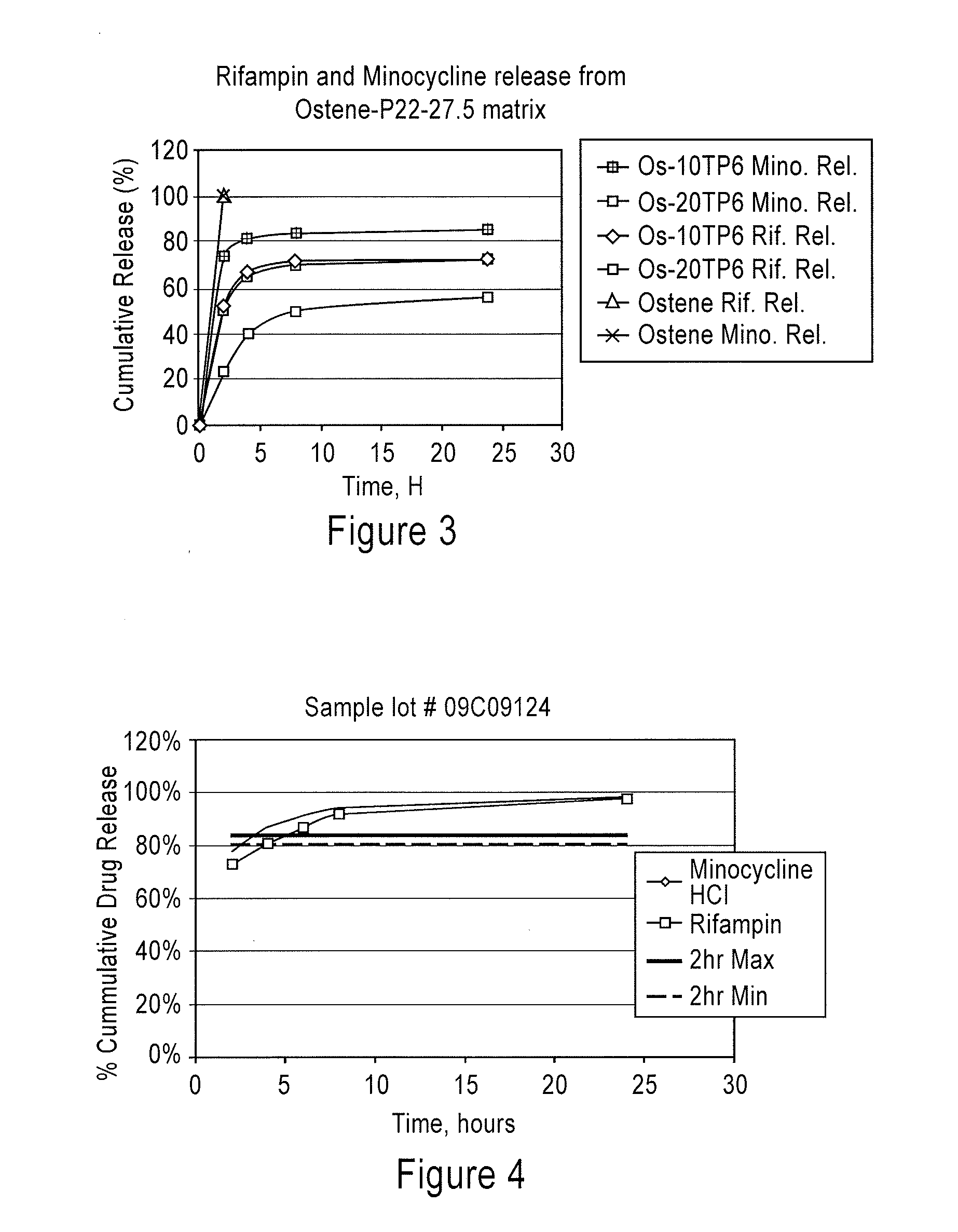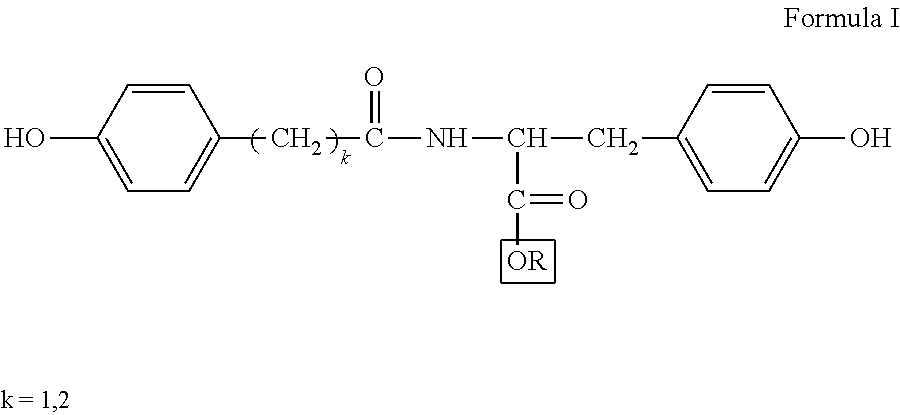Compositions and Methods for Preventing Sternal Wound Infections
a technology for sternal wounds and compositions, applied in the direction of biocide, drug compositions, tetracycline active ingredients, etc., can solve the problems of mediastinitis, extremely high mortality rate, and infection of the mediastinum, and achieve the effect of great reduction of infection leading to mediastinitis
- Summary
- Abstract
- Description
- Claims
- Application Information
AI Technical Summary
Benefits of technology
Problems solved by technology
Method used
Image
Examples
example 1
Preparation of Polymer-Drug Powder
[0161]Tyrosine polyesteramide (P22-27.5) powder containing rifampin (10%) and minocycline (10%) drug was prepared by grinding polymer film. The polymer film containing rifampin and minocycline was prepared by solvent-cast method. Briefly, 8 g of tyrosine polyesteramide P22-27.5 was dissolved in 36 ml of THF. In a separate vial 1 g of rifampin and 1 g of minocycline was dissolved in 4 ml of methanol. The two solutions were mixed and poured into a TEFLON dish (10 cm diameter×1.9 cm depth). The solution was left at room temperature in a hood for 16-18 h to evaporate solvent. The dish was placed at 50° C. oven under vacuum for 24h. The formulation bubbled up and formed a film. The film was crushed into the powder using a small mixer. The yield was 8.7 g Tyrosine polyesteramide polymer powder containing 10% each of rifampin and minocycline having MW range from 6 kDa to 70 000 kDa was prepared by this method. The MW weight of the polymer powder was assess...
example 2
Preparation of PEG-Polymer Formulation
[0162]Various formulations were prepared in which P22-27.5-drug powder was combined with different ratios of PEG (MW 400) to yield various polymer-drug powder combinations. Table 2 below shows different combinations.
TABLE 2P22-27.5-rifampin-minocycline formulations with PEG 400P22-27.5-drug% powder in#powder, gPEG 400, gPEG 40010.35.7 520.32.71030.31.71540.31.02356.2516.927%
example 3
Viscosity Measurements
[0163]Viscosity of oil-like (lubricant type) formulation was measured on Brookfield viscometer (Model DV II+Pro, Brookfield Engineering Lab Inc., Middleboro, Mass.) equipped with temperature probe and 4 various spindles. The formulation #5 mentioned in Table 2 was taken into 20 ml scintillation vial and the viscosity was measured using spindle #63 at ambient conditions with a shear rate of 10 rpm. The viscosity of the formulation was 2230-2260 cp (centipoise).
PUM
| Property | Measurement | Unit |
|---|---|---|
| Fraction | aaaaa | aaaaa |
| Fraction | aaaaa | aaaaa |
| Fraction | aaaaa | aaaaa |
Abstract
Description
Claims
Application Information
 Login to View More
Login to View More - R&D
- Intellectual Property
- Life Sciences
- Materials
- Tech Scout
- Unparalleled Data Quality
- Higher Quality Content
- 60% Fewer Hallucinations
Browse by: Latest US Patents, China's latest patents, Technical Efficacy Thesaurus, Application Domain, Technology Topic, Popular Technical Reports.
© 2025 PatSnap. All rights reserved.Legal|Privacy policy|Modern Slavery Act Transparency Statement|Sitemap|About US| Contact US: help@patsnap.com



